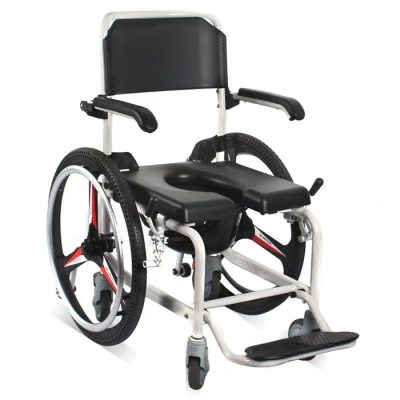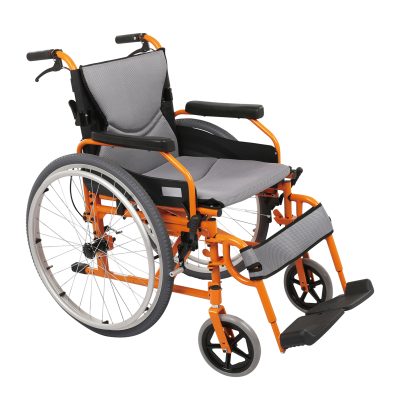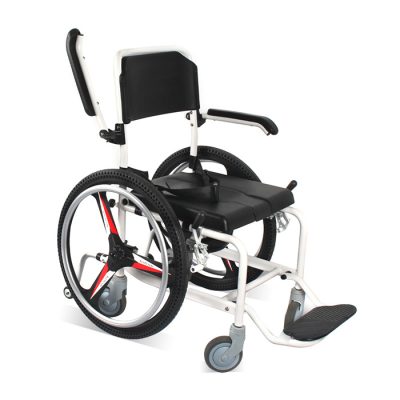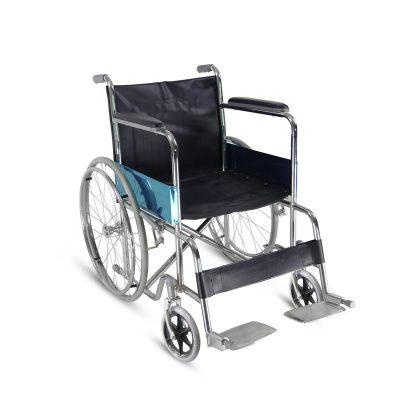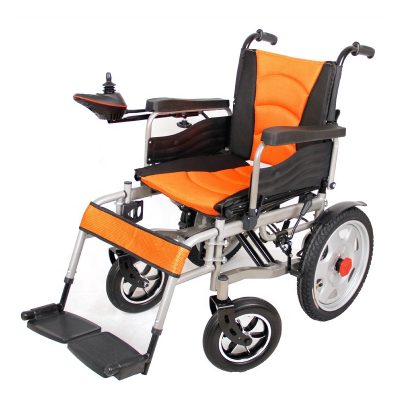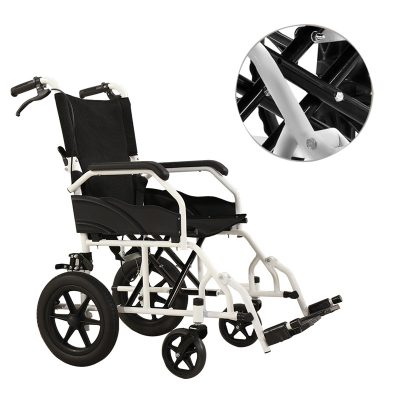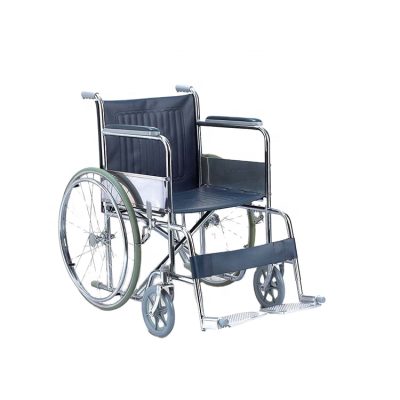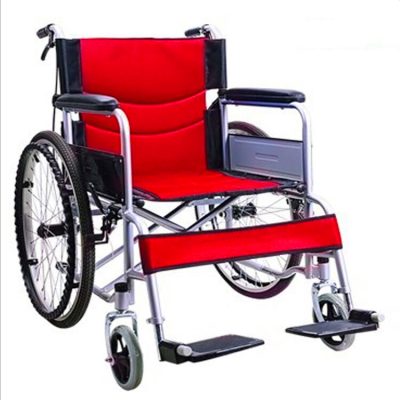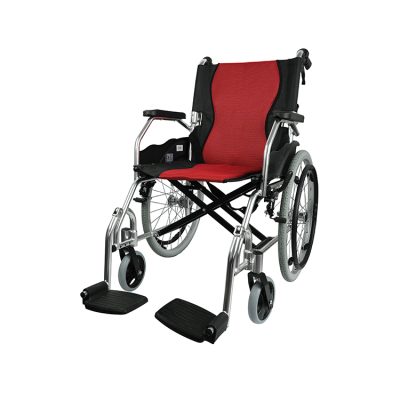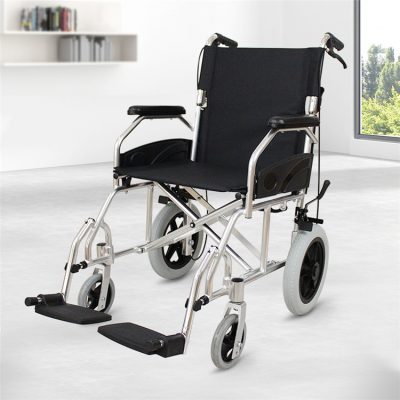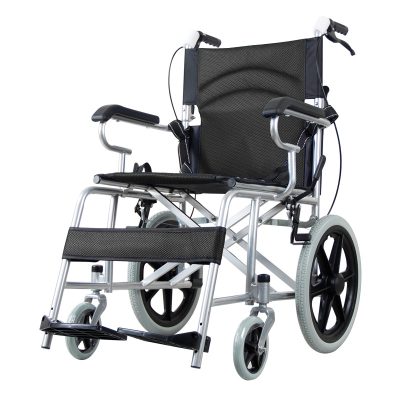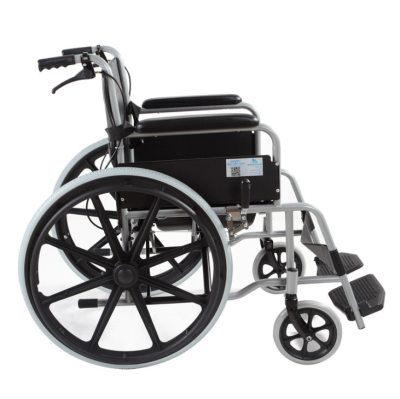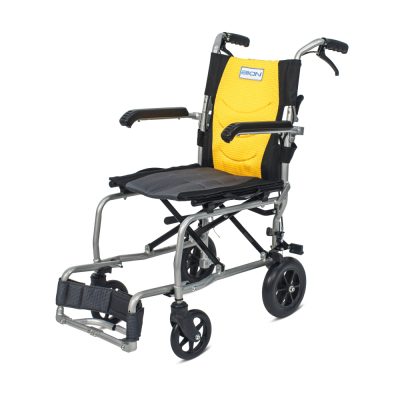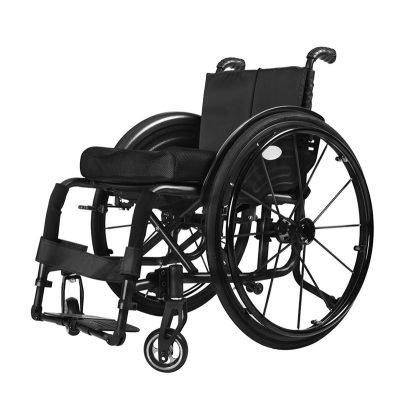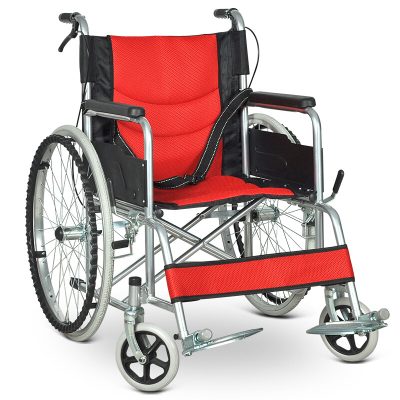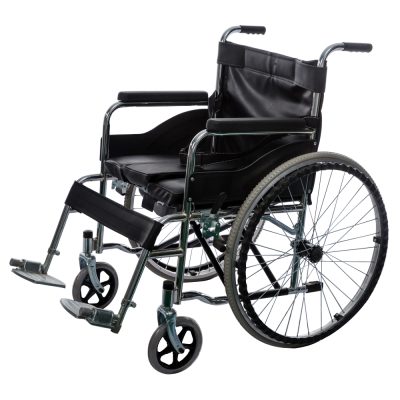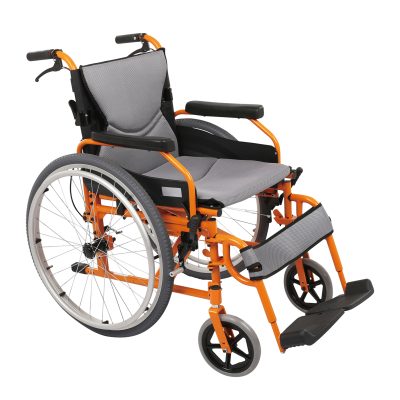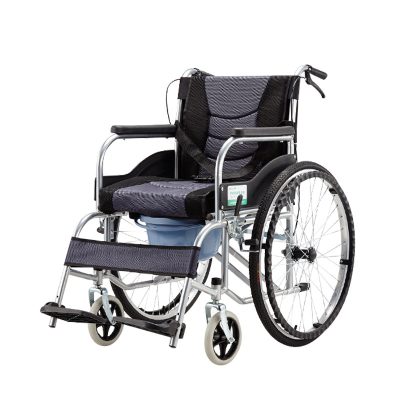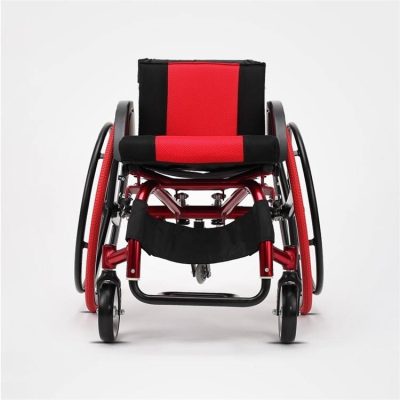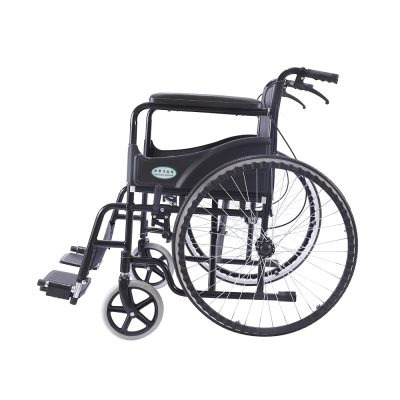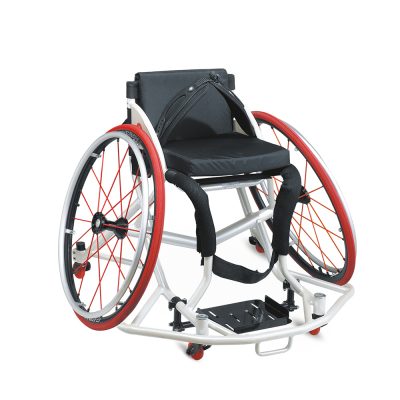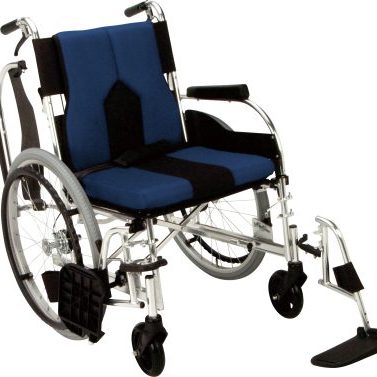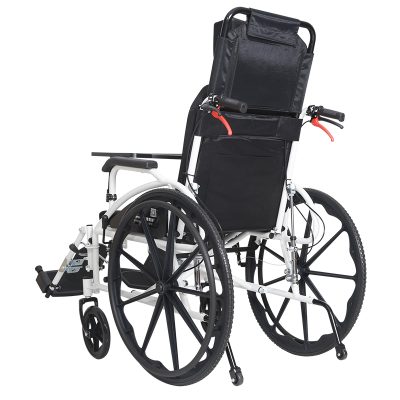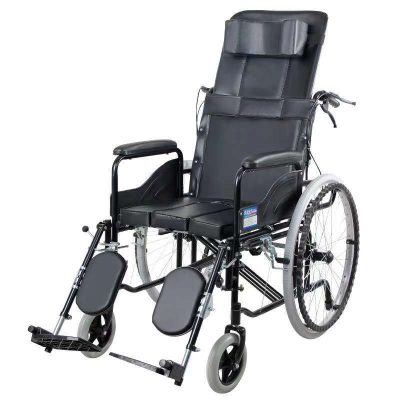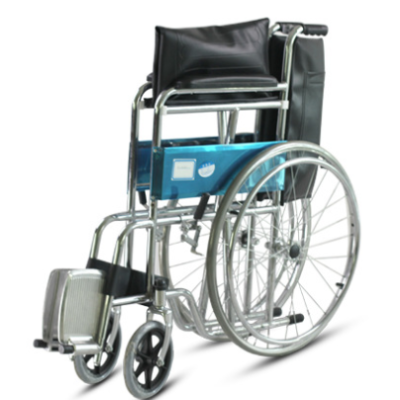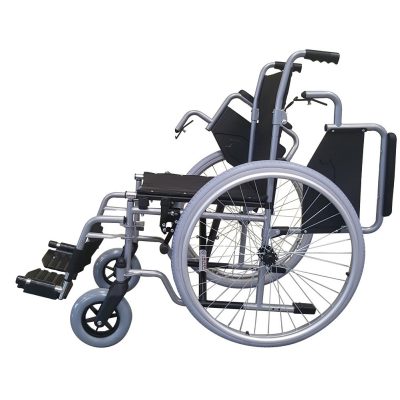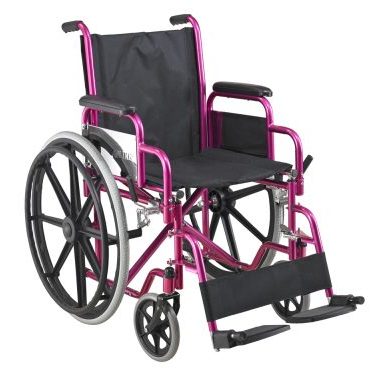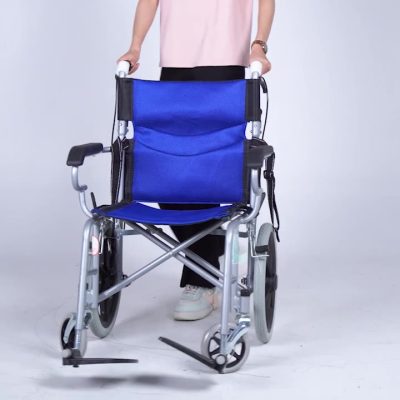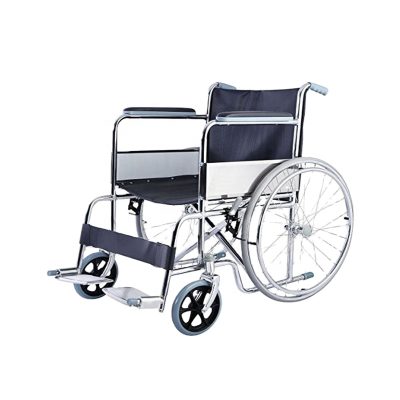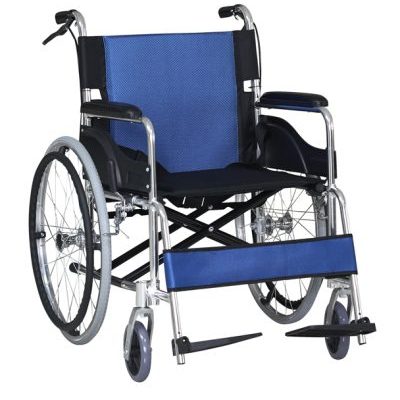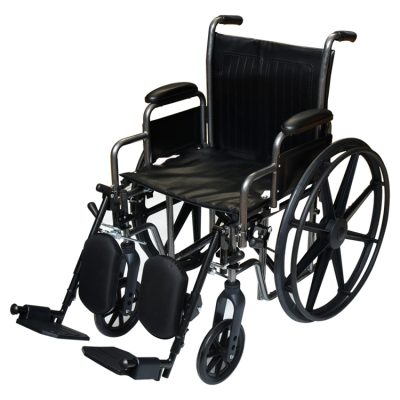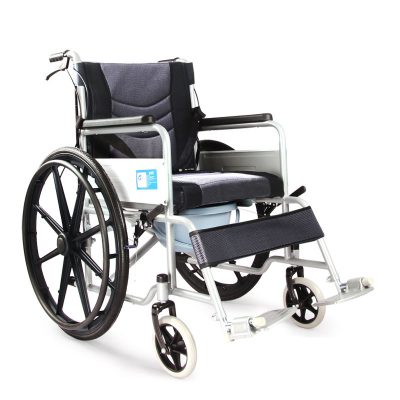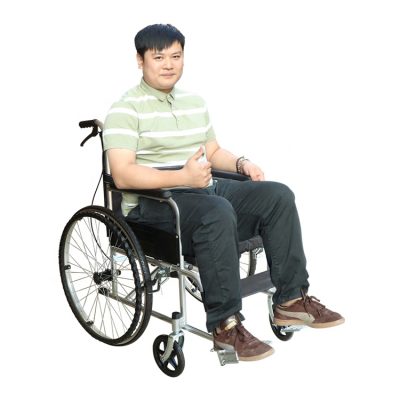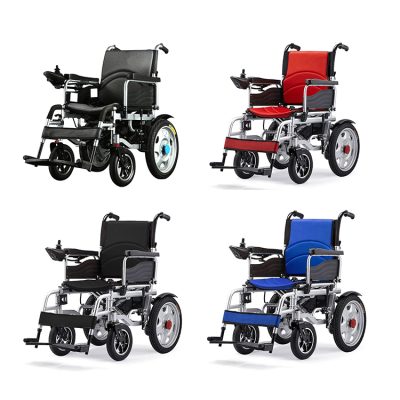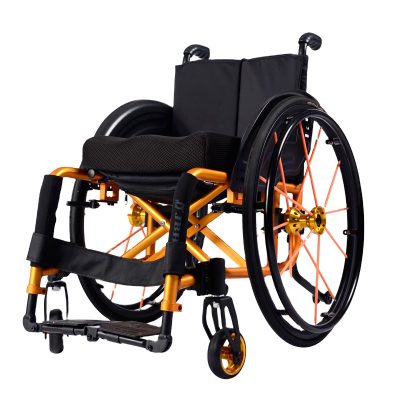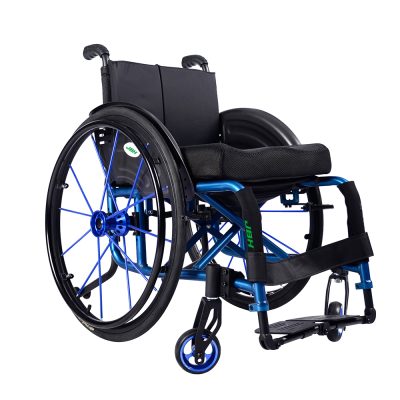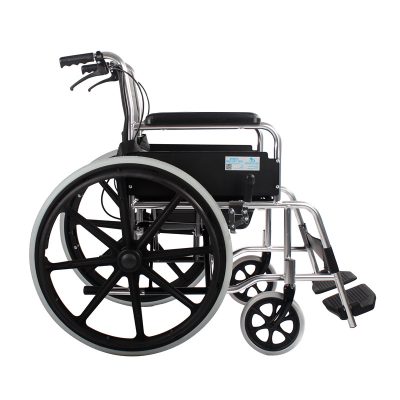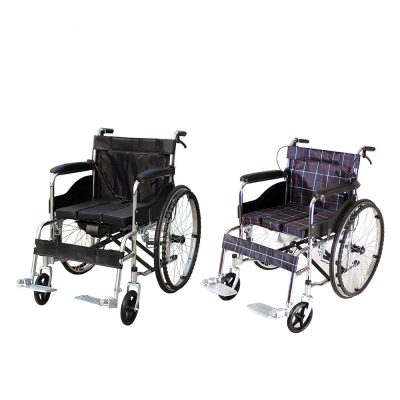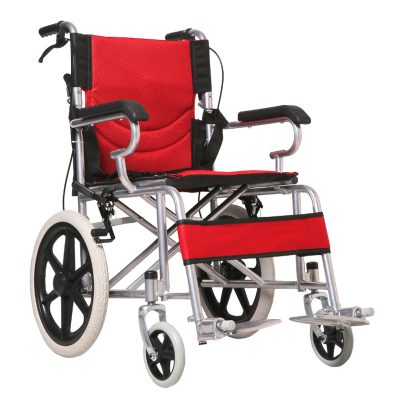Features of manual wheelchairs
Because of its large wheel diameter, manual wheelchairs can adapt to a variety of roads. They are mainly used as a long-distance transportation tool outdoors and can load and plant goods appropriately. It has the characteristics of faster driving speed and labor saving.
The user’s upper limbs drive the manual wheelchair in the following ways: vertical rocking, horizontal rocking and push-pull. Transmission devices include chain transmission, gear transmission and connecting rod transmission. Generally, manual wheelchairs have manual brakes and ramp brakes, and they can also have shifting and reversing devices.
Manual wheelchairs are mainly divided into two categories: front-wheel drive and rear-wheel drive. The front-wheel-drive manual wheelchair has a simple structure and can be driven and steered with both hands or with one hand. However, this kind of manual wheelchair has poor operational stability, and its climbing ability is also worse than that of a rear-wheel drive manual wheelchair. The rear-wheel-drive manual wheelchair is easier to operate, has less waist movement, and has better climbing performance. But the transmission structure is more complicated.
For manual wheelchairs, a manual drive handle is added on the basis of ordinary wheelchairs. The appearance of this kind of manual wheelchair is similar to that of an ordinary wheelchair, the body is smaller than a tricycle, and it is relatively lighter to use. It is driven by chain, when both hands rotate synchronously, it can realize straight travel; the differential can realize turning and the control is flexible.








